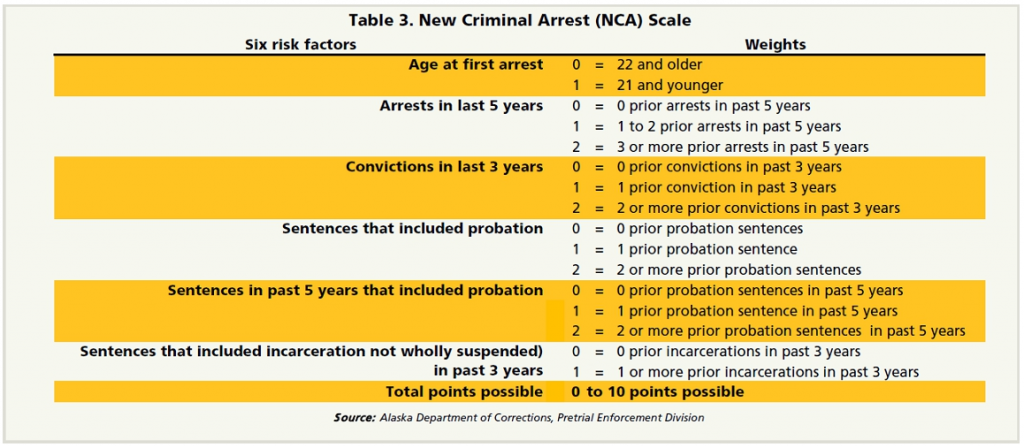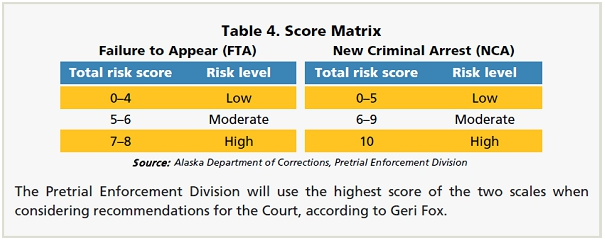What is the Pretrial Risk Assessment Tool and How was it Developed for Alaska?
Before we dive into the topic of the tool I want to mention that in late January, Governor Dunleavy introduced SB 33 which seeks to no longer use the risk assessment tool. Also while it would retain pretrial supervision, the Pretrial Enforcement Division (PED) would no longer exists as its own department. Instead the bill would give judges the discretion to decide pretrial terms of their own for the person charged with the crime.
Until/if this bill passes the legislature in current form, Alaska will continue to use the risk assessment tool and the PED will still be their own department. Because of this we still feel it’s important for victims to know how the tool works.
On January 1, 2018 the state of Alaska began using a new pretrial risk assessment tool that calculates whether a defendant is at low, moderate, or high risk for failure to appear in court or to commit another crime if released.
One major reason why this tool was created was to reduce the number of pretrial inmates in Alaska’s prisons, which had grown by 88% from 2004 to 2014.
In order to know how likely an inmate would be a risk factor with Failure to Appear (FTA) the state looks at factors such as age of first arrest, prior FTA warrants, if they have a current property crime and if they currently has a motor vehicle change (non-DUI).
When deciding the risk of an inmate being charged with a New Criminal Arrest (NSA) while out on pretrial release the tool looks at the age of their first arrest, how many arrests they’ve had in the last five years, how many convictions in the last three years, and probation associated with these arrests.
The Pretrial Enforcement Division will use the highest score of the two scales when considering recommendations for the Court.
This information is given to the judge, prosecutors and defense attorneys prior to a bail hearing. Besides the information provided by the pretrial risk assessment tool, the judge is still going to consider statutory guidelines such as the nature and circumstances of the offense, weight of the evidence, family ties, employment, length of residence, conviction record, failure to appear record, danger the defendant poses to the victim, as well as the reputation, character, and mental condition of the offender.
A defendant’s score does not take into account factors such as the charges in a defendant’s case, the possible sentence, any potential harm to the public, weight of evidence, and a defendant’s ties to the community or their personal financial resources.
In June of 2018 HB 312 was signed into law which changed the risk assessment tool for the better, and gave judges more discretion when setting bail terms. Firstly, the law allows judges to consider the defendants out-of-state criminal history. Also, before this law was enacted, part of the risk assessment tool was a mandatory provision that required judges to release defendants charged with either low-risk class-C felonies or low-risk and moderate-risk misdemeanors. The new law allows judges to keep a person in custody for low-level offenses when looking at the available facts on the case.




Recent Comments